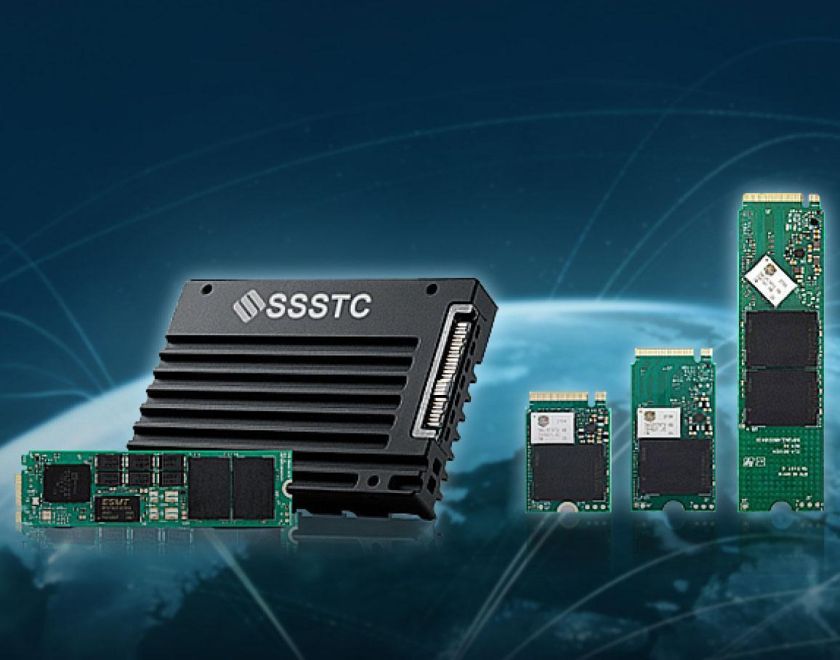What Is RAID? How SSDs Use RAID to Boost Performance and Reliability
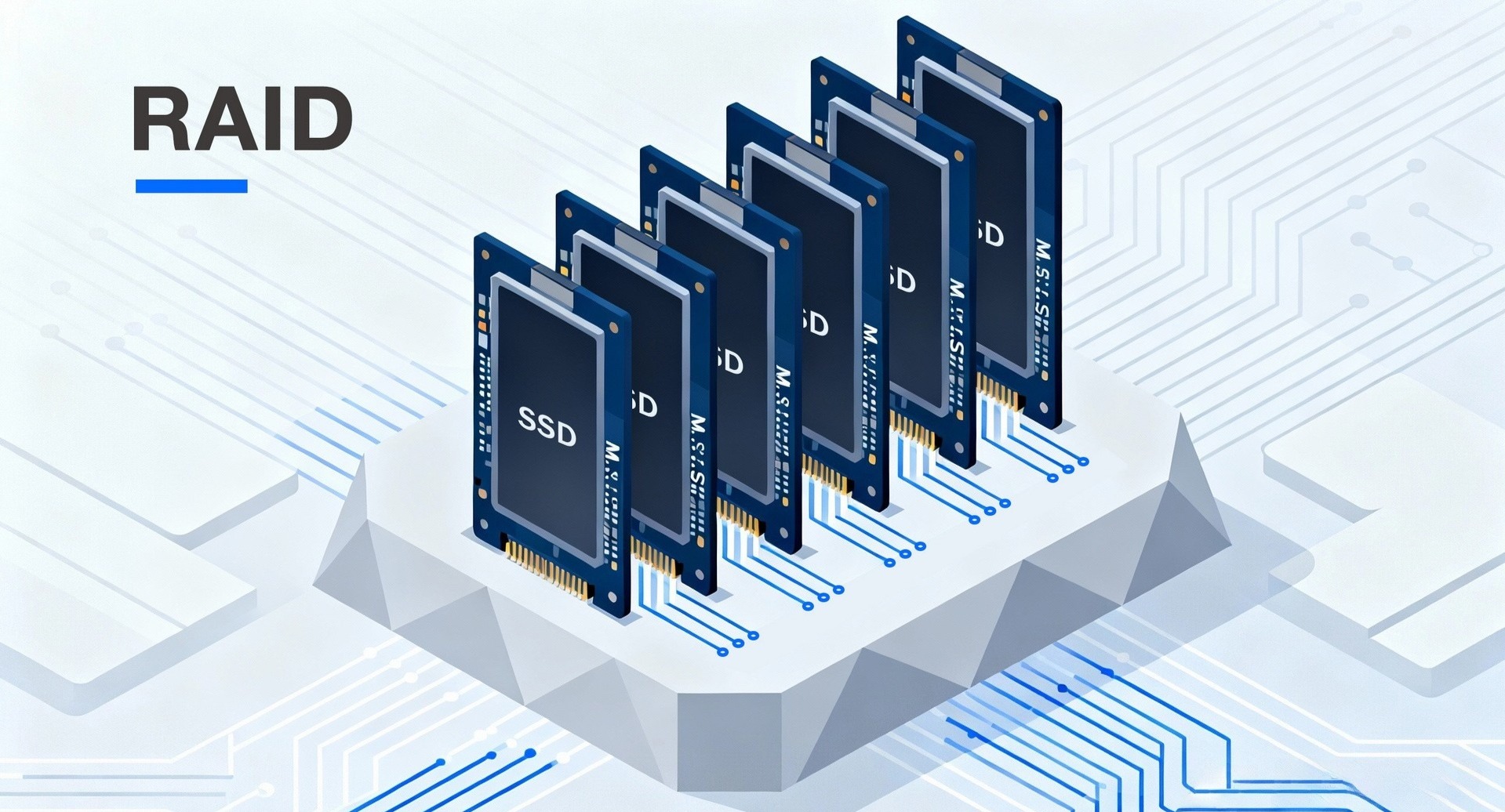
Different RAID levels
RAID is not a single technology but a family of data‑storage strategies.Each level of RAID differs in performance, fault tolerance, and storage efficiency.
Below are the most common RAID configurations:
RAID 0: Maximum Performance, No Data Protection
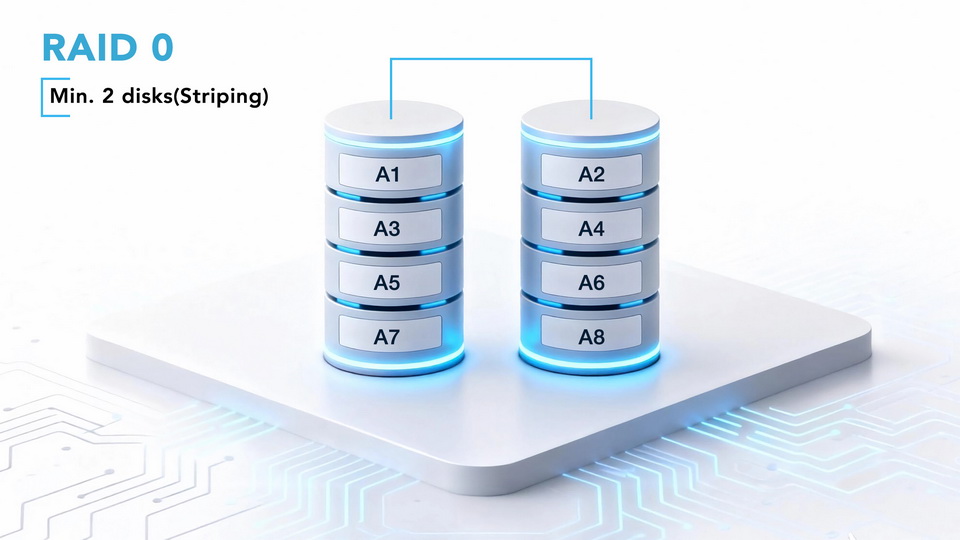
RAID 0 (striping) divides data into blocks and distributes them evenly across multiple SSDs.Each drive stores part of the data, allowing parallel reads and writes to maximize speed.A minimum of two SSDs is required.
Pros:
- Read/write performance increases linearly with the number of drives (up to controller and interface limits).
- No storage overhead — total capacity equals the sum of all drives.
Cons:
- No fault tolerance. Failure of one drive causes total data loss.
Application:
- Performance only workloads such as temporary test environments, video editing caches, or gaming caches.
RAID 1:Maximum Data Protection, Lower Capacity

Pros:
-
High data protection — array continues as long as one drive survives.
-
Supports parallel read operations for faster access.
Cons:
-
Effective capacity equals only one drive (50% efficiency).
-
Write latency increases with the number of mirrored drives.
Application:
- Critical systems requiring high reliability — OS boot drives, financial transaction systems, and configuration repositories.
RAID 5:Balanced Performance and Fault Tolerance
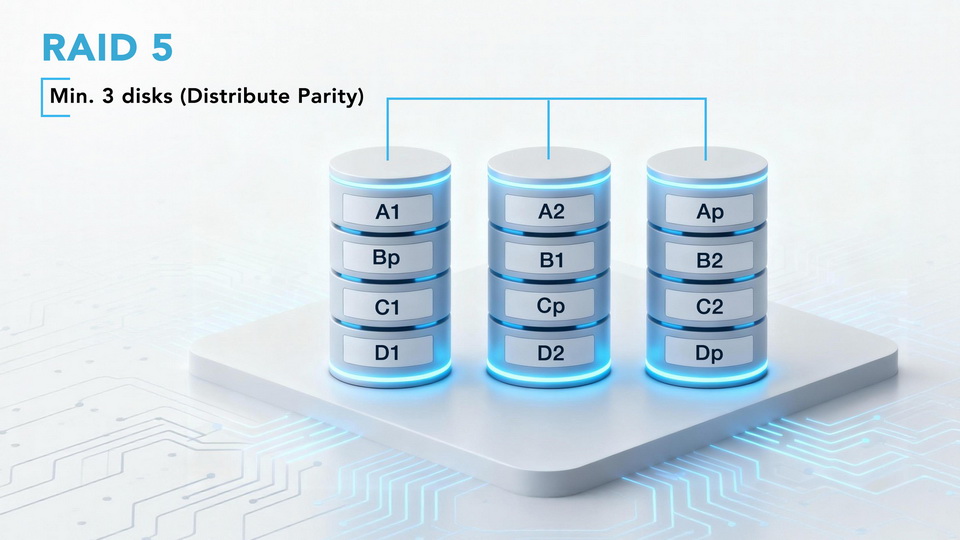
Pros:
-
Can tolerate one drive failure.
-
Efficient capacity utilization — usable capacity = (N‑1) drives.
Cons:
-
Slower write speed due to parity calculation.
-
Rebuilds are time‑consuming and place heavy write stress on SSDs, shortening lifespan.
Application:
- General business use — file servers, backup hosts, and large NAS systems.
RAID 6:Higher Fault Tolerance
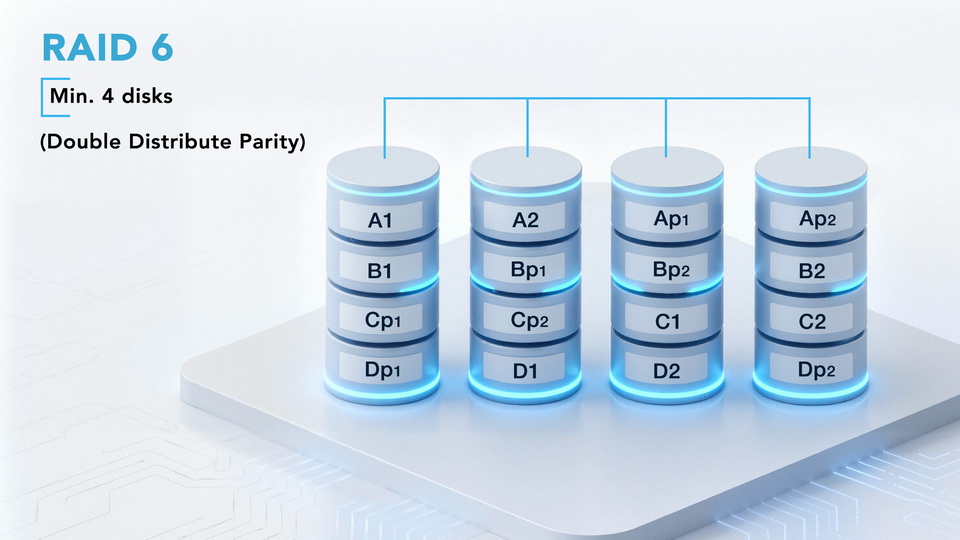
Pros:
-
Can tolerate two simultaneous drive failures.
-
Acceptable capacity efficiency (usable = total drives − 2).
Cons:
-
Slower writes than RAID 5 (dual parity updates).
-
Longer rebuild times and higher risk during recovery.
Application:
- Enterprise file storage, long‑term backups, and large‑capacity NAS deployments.
RAID 10:High‑Performance Redundancy
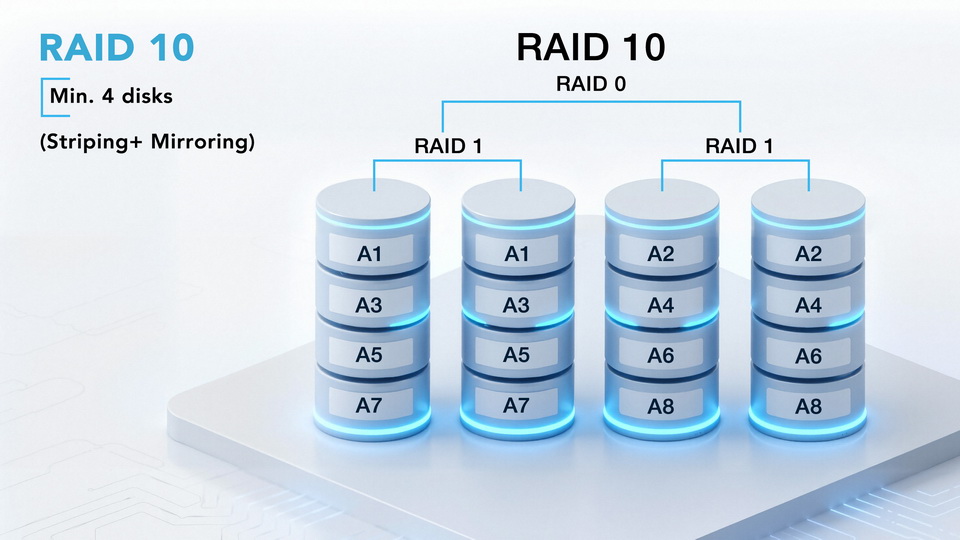
RAID 10 (striped mirrors) combines the speed of RAID 0 with the redundancy of RAID 1.Requires an even number of SSDs (minimum four).
Pros:
-
Excellent performance — near RAID 0 speeds.
-
High fault tolerance — system continues as long as one drive per mirror set survives.
-
Faster, safer rebuilds.
Cons:
-
50% capacity efficiency.
-
Higher hardware cost.
Application:
- Applications requiring both performance and reliability — databases, virtualization hosts, and mission‑critical systems.
RAID Level Comparison Table
| RAID Type | Min. Number of Drives |
Usable Capacity |
Fault Tolerance |
Performance |
Key Features |
Recommended Use Cases |
|
RAID 0 |
2 |
100% |
None |
★★★★ |
Striping – Maximum performance, no redundancy |
Test environments, video editing cache, game cache |
|
RAID 1 |
2 |
Capacity of 1 drive |
Tolerates up to N‑1 drive failures |
★★ |
Mirroring – High data protection, low capacity efficiency |
OS drives, configuration file storage, financial systems |
|
RAID 5 |
3 |
Capacity of (N‑1) drives |
Tolerates 1 drive failure |
★★ |
Striping with 1 set of distributed parity – Balanced performance |
File servers, backup systems, large NAS arrays |
|
RAID 6 |
4 |
Capacity of (N‑2) drives |
Tolerates 2 drive failures |
★ |
Striping with 2 sets of distributed parity – Enhanced fault tolerance |
Enterprise storage, long-term data archiving, large-capacity NAS |
|
RAID 10 |
4 (even number) |
50% |
Each mirror group tolerates 1 drive failure |
★★★ |
Mirrored then striped – Combines performance and protection |
Database servers, virtualization hosts, mission‑critical applications |
Considerations When Building SSD RAID Arrays
-
Prioritize RAID 1 or RAID 10
RAID 1 offers high availability with balanced write distribution and low risk.RAID 10 combines RAID 1’s fault tolerance and RAID 0’s performance, making it the preferred practical choice for SSD deployments — especially in AI inference, virtualization, and high‑I/O transactional environments.
Compared to RAID 5/6, RAID 1/10 avoids complex parity calculations, resulting in lower write amplification (WAF) and longer SSD lifespan.When a drive fails, rebuild simply mirrors data to a new SSD — faster, less disruptive, and safer for data integrity.RAID 1 and 10 have lower capacity utilization (≈50%), but in enterprise environments prioritizing uptime and reliability, the investment is well justified. -
Be Cautious with RAID 5 / RAID 6 on SSDs
While these configurations offer capacity and redundancy balance, they present unique challenges for SSDs:
╴High Write Amplification: Frequent parity calculations increase write volume, accelerating wear.
╴Rebuild Stress: Heavy random reads/writes during rebuild shorten lifespan and risk cascading failures.
╴Write Hole Risk: Power loss before parity synchronization can corrupt parity and cause rebuild errors.
Use high‑endurance enterprise SSDs (DWPD > 1) with Power Loss Protection (PLP) and End‑to‑End Data Protection (E2E).Plan periodic replacement and lifespan monitoring to minimize long‑term risk. -
Choose Enterprise‑Grade SSDs for Stability and Longevity
Enterprise SSDs significantly enhance RAID stability and reduce data‑loss risk.Recommended models include pSLC or eTLC SSDs, designed to withstand high write cycles and rebuild workloads.Drives with Power Loss Protection (PLP) ensure cached data is safely flushed during power outages, preventing metadata corruption.
SSDs with End‑to‑End Data Protection further safeguard against RAID rebuild failures caused by data errors.These features help prevent failures during parity recalculations or rebuild operations, ensuring data integrity and system availability.
Conclusion
- For balanced performance and endurance → RAID 1 or RAID 10
- For high‑capacity environments → RAID 5 or 6, but only with enterprise‑grade SSDs and strict maintenance
As a professional SSD developer, SSSTC offers a wide range of storage solutions purpose‑built for RAID architectures and enterprise workloads.Our SSDs support Wear Leveling, TRIM optimization, and firmware‑level data integrity safeguards to reduce rebuild failure risks.Through optimized FTL write strategies and firmware‑level protection, SSSTC SSDs deliver enhanced stability and reliability in RAID environments.For enterprise SSD deployment, RAID planning, or system integration consulting, contact the SSSTC team for expert guidance.
-
SSSTC SATA SSD
Widely used in rugged computers, laptops, servers, edge servers, video surveillance systems, and enterprise-level storage solutions, they offer stable and dependable data storage. -
SSSTC NVMe™ SSD
With high-speed transfer and low latency, it's used in data centers, cloud services, big data, gaming, and graphics, enhancing system performance and speed.


__24C05D67dI.webp)
__24C15hqqtC.png)
__24C15wOdCC.png)









__24C05XQ2my.jpg)






__24C05fplcZ.png)
__24C05vgHYC.png)
